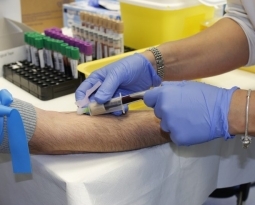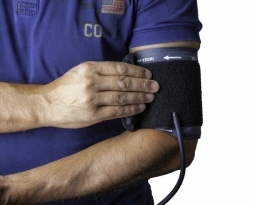New Jersey Patent of the Month – November 2022
Ablation treatments use extreme temperatures to destroy abnormal tissues and treat a variety of conditions. Atrial ablation can restore normal heart rhythms and nerve ablation can help reduce some types of chronic pain. With such important tasks, the ablation device, which is typically a probe designed to deliver the microwave or RF frequencies, must be capable of delivering a controlled and precise amount. ExpandoHeat, LLC has designed an end effector piece which can improve this precision in ablation treatments.
The company found that many ablation probes had been designed in a way that caused the maximum energy to be delivered where an inner conductor of a coaxial cable exits the cable and connects to the microwave antenna. Unfortunately, this location is not at the end of the ablation probe, meaning the targeted area which the probe is aimed at does not receive the maximum energy.
ExpandoHeat’s design is an end effector with a microwave antenna surrounded by microwave absorbing material such as ceramic or silicone. A portion is surrounded by high-density absorbing material, and the outer region has low-density absorbing material. This high-density material allows the microwave energy delivered by the antenna to be transferred to heat energy at a higher percentage. The heat energy will transmit through the absorbing material, heating any tissue that is in contact with this high density material. The lower-density material will, instead, transfer the microwave energy into a lower percentage of heat energy. This means the actual microwave energy will be transmitted to the surrounding tissue. This process ensures that the tissue in direct contact will receive less microwave energy and will be heated by heat conduction while the deeper layers of the tissue will receive more of the microwave energy.
The material can be packed in different patterns so that there is more or less high or low density material as needed. This provides greater control over the degree and amount of microwave energy delivered to tissue. With greater control comes greater outcomes.
ExpandoHeat is on a mission to change the way surgery is done. Our technology allows surgeons to perform surgeries with more precision, less peripheral tissue damage, and greater effectiveness. This means fast patient recoveries, no complications and short hospital stays.
Are you developing new technology for an existing application? Did you know your development work could be eligible for the R&D Tax Credit and you can receive up to 14% back on your expenses? Even if your development isn’t successful your work may still qualify for R&D credits (i.e. you don’t need to have a patent to qualify). To find out more, please contact a Swanson Reed R&D Specialist today or check out our free online eligibility test.
Who We Are:
Swanson Reed is one of the U.S.’ largest Specialist R&D tax advisory firms. We manage all facets of the R&D tax credit program, from claim preparation and audit compliance to claim disputes.
Swanson Reed regularly hosts free webinars and provides free IRS CE and CPE credits for CPAs. For more information please visit us at www.swansonreed.com/webinars or contact your usual Swanson Reed representative.

















